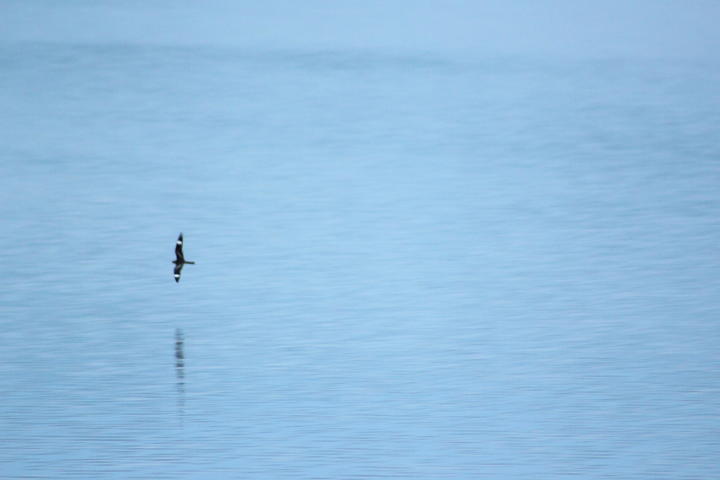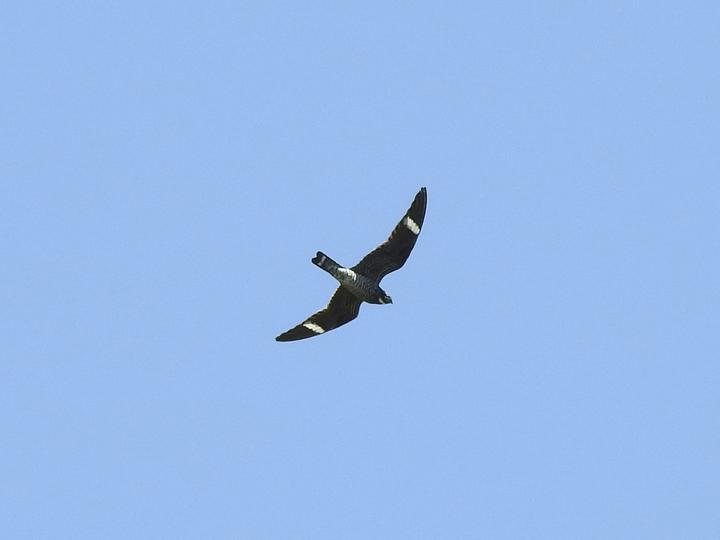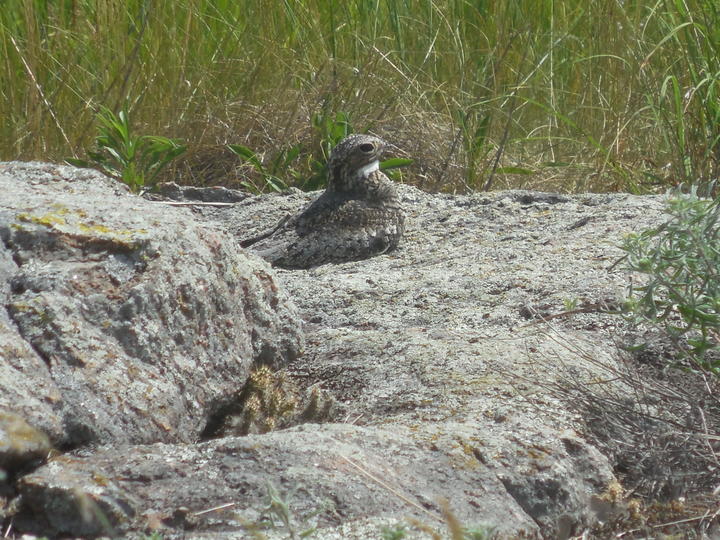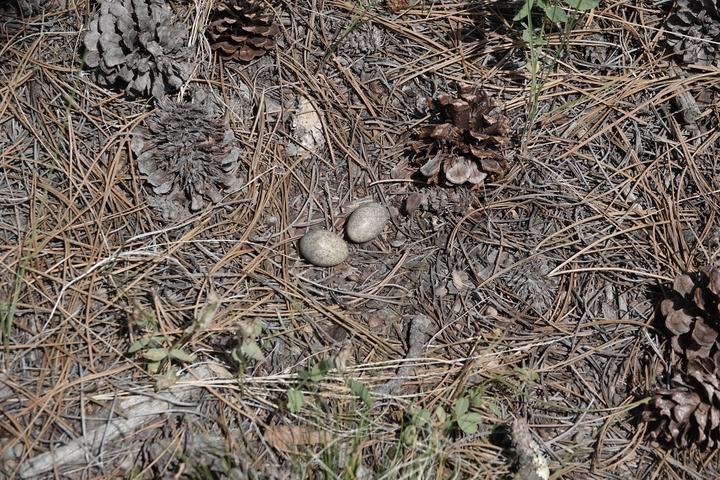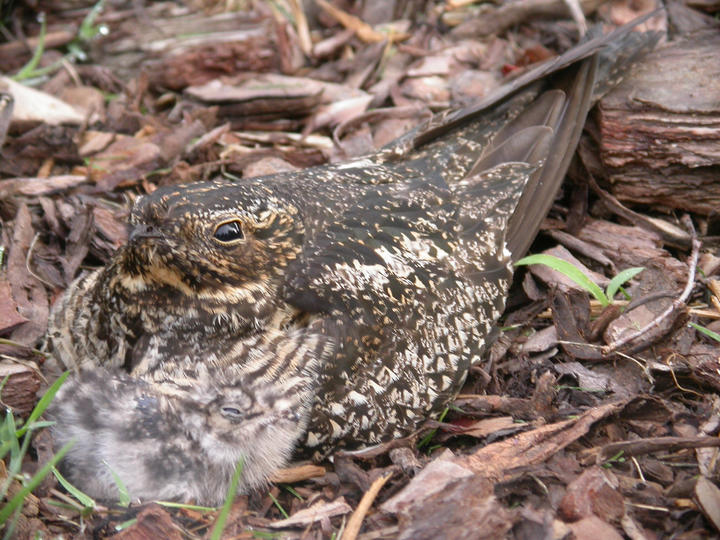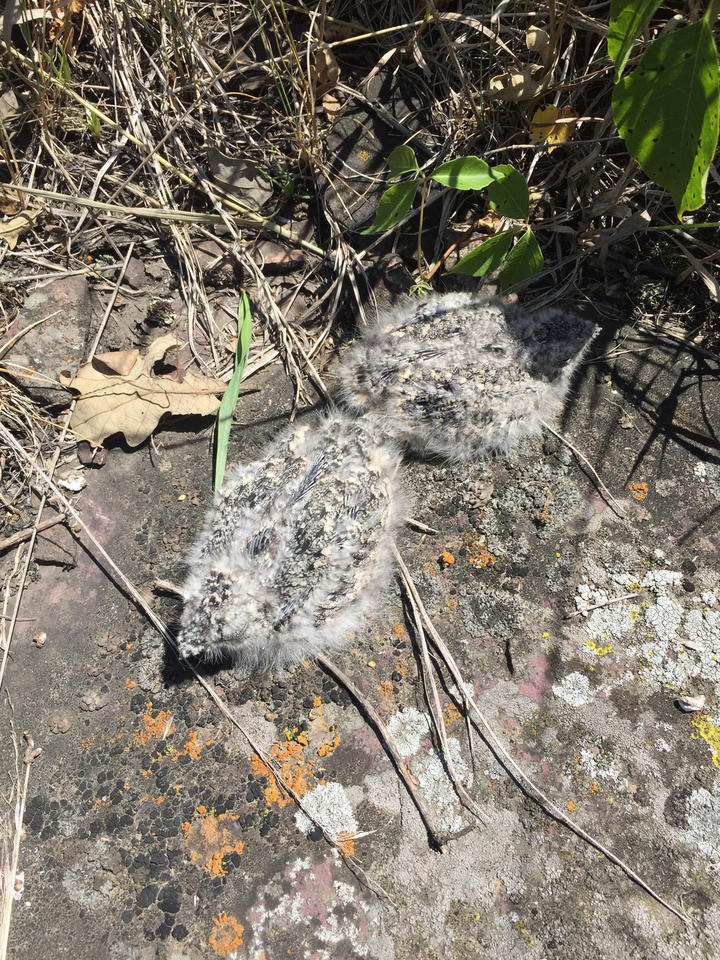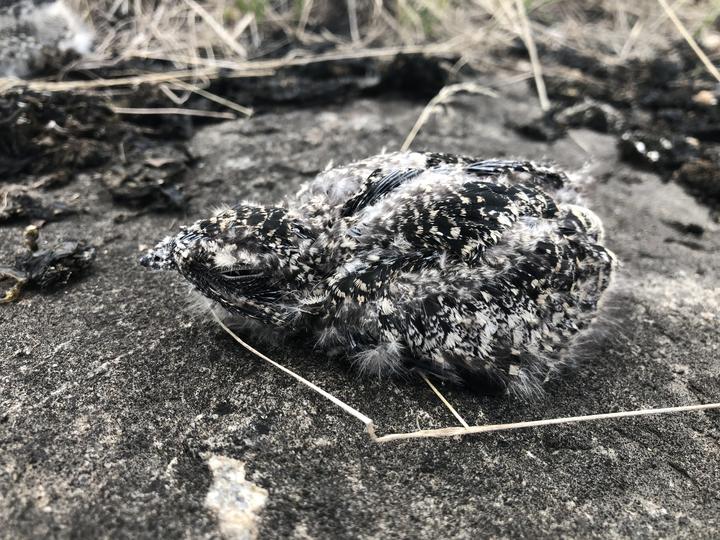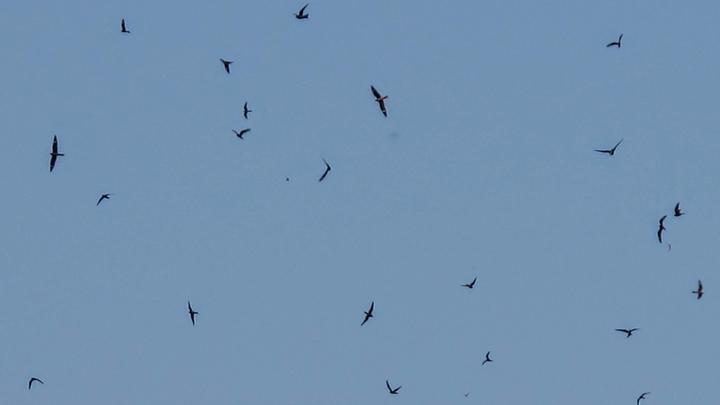More names for this bird
Dakota: Piṡko
The Dakota and Anishinaabe were among the earliest people to name Minnesota’s plants and animals, as well as to understand them in relation to Minnesota’s climate and seasons. Those original names are still in use, and several are included on the Season Watch website. However, complete translations were not available.
Latin (or scientific name): Chordeiles minor
The scientific community has a convention of assigning agreed-upon Latin names to every kind of organism. Using scientific names helps people communicate confidently about the same organism and organize lifeforms based on how closely related they are.
Page contents
About the common nighthawk
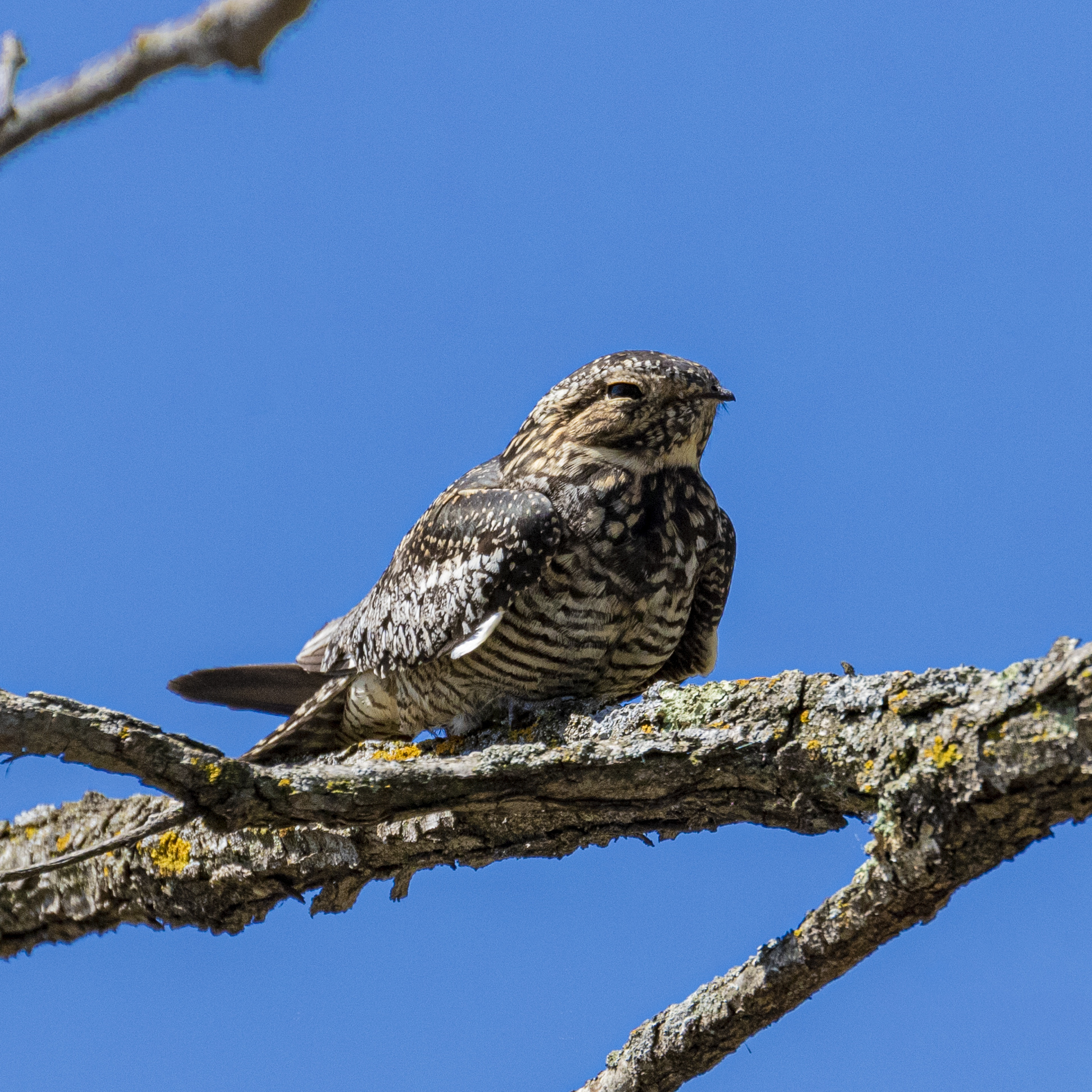
May 26, 2019, Sherburne County
Photo © fsadjadi, some rights reserved (CC-BY-NC)
iNaturalist observation
About the common nighthawk
- The common nighthawk is a nocturnal bird that is larger than a robin but smaller than a crow.
- It is black, gray, and buff with white patches on its wings, a tiny bill, and short legs.
- Nighthawks mostly eat flying insects such as wasps, beetles, moths and flies. Occasionally they supplement their diet with small amounts of vegetation.
- Nighthawks nest on the ground in open areas. This includes gravel rooftops in urban areas, as well as non-urban spaces such as logged forests, prairies, and grasslands.
- They incubate their eggs anywhere from two to three weeks. Young leave the nest seventeen to eighteen days after hatching.
- Fun fact: Nighthawks often take advantage of clouds of insects attracted to streetlamps, stadium lights, and other bright lights.
- Common nighthawks migrate. Expand the "Migration animation" section below to learn more.
Migration animation
Migration animation
Click the full-frame icon (lower right corner of video) to play at full size.
More about eBird's abundance animations
eBird data from 2006-2020. Estimated for 2020. Fink, D., T. Auer, A. Johnston, M. Strimas-Mackey, O. Robinson, S. Ligocki, W. Hochachka, L. Jaromczyk, C. Wood, I. Davies, M. Iliff, L. Seitz. 2021. eBird Status and Trends, Data Version: 2020; Released: 2021. Cornell Lab of Ornithology, Ithaca, New York. https://doi.org/10.2173/ebirdst.2020
Visual guide to phenology
Watch for changes in nighthawks' presence (or absence), abundance, and behaviors at different times of year. Also, pay attention to when young-of-year appear and develop.
Note to observers
This page explains general clues to watch and listen for when observing common nighthawk phenology. However, this page does not explain how to identify this bird or collect data in a standardized way.
- For help with identification, see The Cornell Lab's All About Birds.
- For guidance on collecting data, see Nature’s Notebook.
Audio resources
When you hear a bird, the next step is to locate it and watch for behavioral clues to its life cycle stage or activities. Here are two recordings of sounds made by common nighthawks:
Recording by TBR (https://freesound.org/s/567351/) CC0
In the recording below, buzzing sounds (at 0:04 and 0:15) are not vocalizations but rather the sound of air rushing through stiff wing feathers. Nighthawks make these sounds by diving toward the ground.
Recording by Sunny (www.xeno-canto.org/490771) CC BY-NC-SA 4.0
Graphs and historical data
Note: The Orientation Center provides a map, as well as information on reading graphs; interpreting summary statistics, who collected the data and how; and how to download datasets for independent exploration.
First flock of migrators (flying south)
- Average: August 9 (occurred in 2008)
- Earliest: August 21
- Latest: September 1 (occurred in 2007)
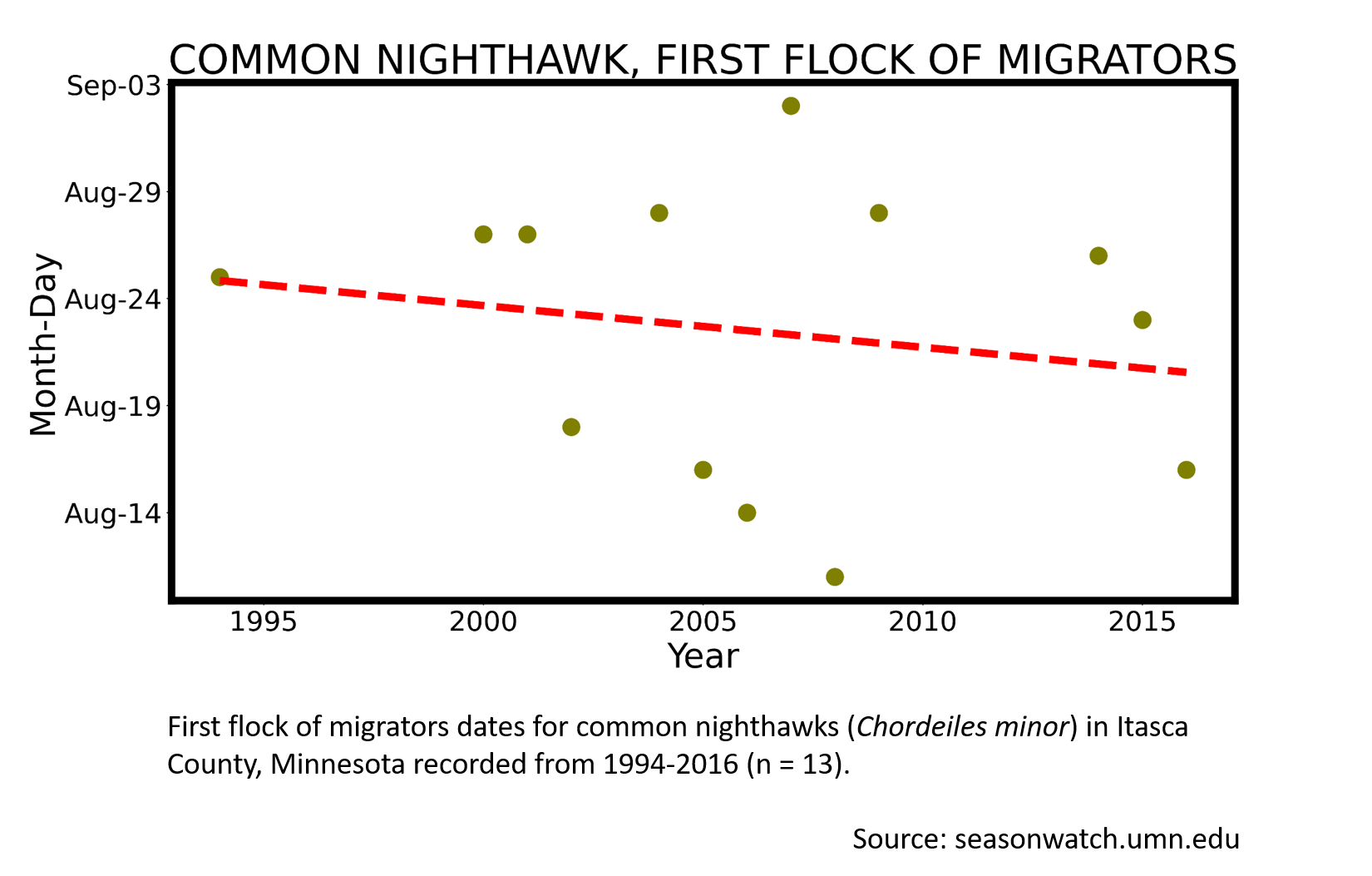
More resources
Keep exploring Season Watch
Keep exploring Season Watch
Co-author: Jayme Hogan, Minnesota Master Naturalist
